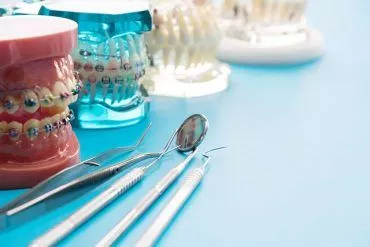
If you’ve wondered about getting dental braces, surely you’ve had to consider the different kinds of braces available and ponder over which one you should get. When it comes to corrective orthodontic treatment, the best way to ascertain the type of brace most suitable for you would be to schedule a consultation with a good orthodontist in Singapore, who will check the condition of your teeth, face and jaws, and give you a professional recommendation.
While you may have a specific diagnosis regarding your teeth, it’s common for good orthodontists to suggest multiple types of braces that are suitable for you, unless you’re one of the few who has a rare or complex orthodontic situation. In that case, your dentist will possibly specify only one type of braces treatment.
So, how do you choose among the common types of braces and know that it’s the most suitable for you? We’ll list them down below for you.
Traditional Metal Braces
What Is It? Metal braces are the ‘father’ of modern dental braces. Consisting of two components, metal braces possess brackets and wires that work together to apply pressure to the teeth and align them into position. The brackets are placed on the teeth while the metal wires are threaded through them, and are adjusted and tightened regularly every month by the orthodontist.
Who It’s Suitable for? Metal Braces are most commonly used by teenagers as they are the least expensive braces option. They’re also the most effective and dependable kind of braces, resulting in the shortest treatment time required to complete the alignment process. They are robust, precise and can easily withstand the harsh oral environment.
Metal braces are suitable for people who want the quickest braces treatment process and who don’t place high importance on aesthetics.
Ceramic Braces
What Is It: The fashionable alternative to metal braces, ceramic braces are similar to metal braces in form and function with the exception that they are made with a tooth-coloured ceramic material. As they have similar colour and texture as teeth, ceramic braces are far less noticeable than conventional metal braces.
Who It’s Suitable for: While they’re considered aesthetically better than metal braces, ceramic braces cost more too. They cater to the aesthetic demands of a range of patients, from teenagers to adults in Singapore.
Ceramic braces are suitable for patients who desire a more visually pleasing cosmetic alternative to metal braces, while still having a relatively fast treatment process as compared to other options like Invisalign aligners.
Lingual Braces
What Is It: The only variation of braces on this list that is worn on the inside (lingual) of the teeth, lingual braces possess some beneficial attributes. As they are worn behind the teeth, they are effectively hidden from view. Functionally, they’re the same as metal or ceramic braces with the exception of being less intrusive or visible. They are harder to adjust and less precise because of their lingual position.
Who It’s Suitable for: Lingual braces are one of the more expensive types of orthodontic treatments in Singapore. It’s known to have a greater difficulty to maintain and clean because of its position in the mouth. Additionally, it’s not a viable option for patients who have a severe or complex misalignment and need more extensive treatment options.
Lingual braces are most suitable for eligible adults who cannot compromise on the aesthetic aspect, and wouldn’t mind a slightly longer treatment time for completion.
Invisalign
What Is It: The most recognised and popular type of clear braces, Invisalign braces are customised virtually invisible aligners that are designed specifically to fit an individual patient’s teeth. Patients using Invisalign require changing to a new set of aligners with a tighter fit every two weeks, as part of the treatment process.
The main appeals of Invisalign are that it’s removable, and is almost invisible because of the clear material. This means they can be removed for meals, and eating and drinking are not affected, while also maintaining an aesthetically pleasing appearance. However, Invisalign is required to be worn for a minimum of 22 hours per day to achieve the best results.
Who It’s Suitable for: In terms of cost, Invisalign is more expensive, but some clinics in Singapore allow instalment payments for braces treatment. Patients using Invisalign aligners must also be disciplined and adhere to the minimum wearing times while ensuring that it doesn’t stain or get damaged. Treatment duration may increase if guidelines are not followed correctly.
It’s ideal for eligible teenagers and adults who don’t have complicated misalignments. Being almost invisible, it’s suitable for patients requiring discretion for their orthodontic treatment.
